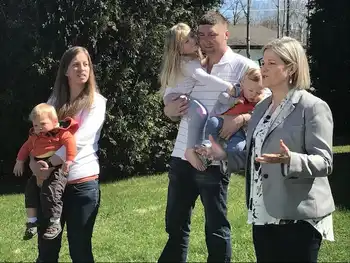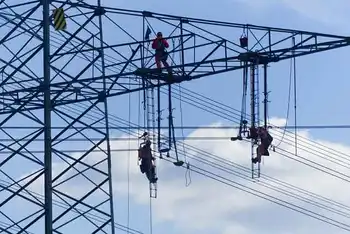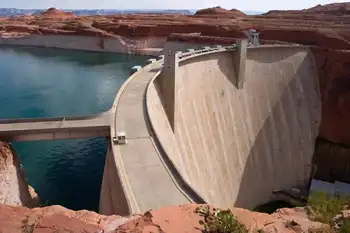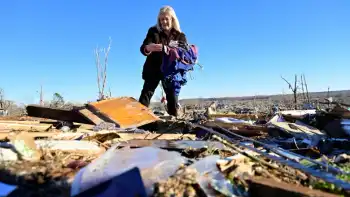An Old Steel Mill Retools to Produce Clean Energy
By New York Times
Protective Relay Training - Basic
Our customized live online or in‑person group training can be delivered to your staff at your location.

- Live Online
- 12 hours Instructor-led
- Group Training Available
The road from Buffalo to this city to the south offers a stark reminder of the regionÂ’s faded past as a hub of industry and shipping.
Yet in the past few months, a different sight has emerged on the 2.2-mile shoreline above a labyrinth of pipes, blackened buildings and crumbling coke ovens that was once home to a behemoth Bethlehem Steel plant: eight gleaming white windmills with 153-foot blades slowly turning in the wind off Lake Erie, on a former Superfund site where iron and steel slag and other industrial waste were dumped during 80 years of production.
“It’s changing the image of the city of Lackawanna,” said Norman L. Polanski Jr., the city’s mayor and a former Bethlehem worker who lost his job when the company stopped making steel here in 1983. “We were the old Rust Belt, with all the negatives. Right now, we are progressive and we are leading the way on the waterfront.”
Christine Real de Azua, of the American Wind Energy Association, said Steel Winds, as this wind farm is known, is the largest to rise in a city, and according to the state Department of Environmental Conservation, it is the first to rise on land overseen by New YorkÂ’s brownfields program. (Brownfields are low-level toxic waste sites concentrated mainly around abandoned factories.)
“It’s a way to convert the Rust Belt to the Wind Belt,” Ms. Real de Azua said.
The turbines, owned jointly by BQ Energy of Pawling, N.Y., and UPC Wind of Newton, Mass., are able to produce a total of 20 megawatts of electricity a year, enough to provide power to 7,000 homes, said the project manager, Mark Mitskovski. The companies involved in the project plan to sell the energy to individual customers or utilities.
The company began construction of the wind farm in September 2006, six months after the federal Environmental Protection Agency declared the site clean enough to be removed from the Superfund list, allowing the state Department of Environmental Conservation to oversee its development.
The windmills are a welcome change for an area buffeted by the loss of jobs and environmental problems since BethlehemÂ’s steep decline began in the mid-1970s as cheaper imported steel, mainly from Japan, began flooding the United States.
At its peak during World War II and through the boom years that followed, Bethlehem employed more than 20,000 people here, most living within walking distance of the plant. But as the jobs vanished, the cityÂ’s population fell from a high of 30,000 in the 1960s to about 19,000 today.
Smoke from the blast furnaces and coke ovens coated the mill town with a layer of red ore dust, and artificial clouds glowed several times each day, when rail cars tipped their loads of slag into Lake Erie, creating a lavalike flow visible from miles away.
“As a kid, we’d be at the beach and you’d see the ladle cars going out there 24 hours a day,” said Michael Malyak, of Lackawanna’s Steel Plant Museum, who was a shipping clerk at Bethlehem for eight years before becoming an elementary school teacher. “The sky would light up, and you’d see this red-hot slag rolling down the hillside.”
Mayor Polanski said that as dangerous and unhealthy as it was, “it was a way of life.”
And one that passed through generations. Like many of his classmates, Mr. Polanski, who is 58, followed his father to Bethlehem, getting hired as an apprentice pipe fitter.
“I graduated in June of ’67, and at the end of July, I had a job at the steel plant,” he said. “I never figured I’d lose that job.”
But as the lower-priced imported steel began to dominate the market, Bethlehem started to shrink. About 7,300 workers lost their jobs when the company stopped making steel in Lackawanna, leaving only the coke ovens and several finishing mills in operation.
Bethlehem ended coke production in 2001, the year the company filed for bankruptcy. A much smaller mill that finishes galvanized steel and employs about 250 is now operated by Mittal Steel, which acquired BethlehemÂ’s assets in 2005 in a merger with International Steel Group.
About $300,000 in state and federal assistance was used to research wind patterns and evaluate the environmental impact, and the windmills each cost $4.5 million to build. Power lines left from the plant carry the electricity from the turbines, while paved roads, rail lines and an industrial port built by Bethlehem were used to bring much of the construction material to the site.
“It’s much easier to do this on farmland somewhere,” Mr. Mitskovski said. “But all the things you would need to build in a green field setting are already here.”
Steel Winds has permits to build two more turbines and plans to put up as many as 27 in all. This month, local officials announced plans to move a rail line and build new roads in an effort to open 400 more acres of brownfields at the former Bethlehem site for redevelopment and to revitalize the Lake Erie port there, which is large enough to handle eight oceangoing ships at a time.
The economic effect of the wind farm on this city will never rival that of the steel giant. Mr. Mitskovski estimated that Steel Winds will ultimately employ a few dozen people, compared with the tens of thousands who punched the clock at Bethlehem. And though there are incentives for clean energy production, taxes generated by the wind farm will never match those paid by the steel mill, which at one time subsidized most of LackawannaÂ’s government.
The greatest effect of the eight windmills, however, may have more to do with attitude.
“A community that has had difficulty moving forward has accepted a technology that leapfrogs other forms of energy generation,” Mr. Mitskovski said. “Decades of steel-making created this environmental legacy. But that also created the opportunity to take this fallow, contaminated land and reuse it.”











